Final Project Sketch
In the 0th week we're asked to sketch our final projects.
After considering several ideas, I (tentatively) decided upon what I call “the I-Ching divination machine”. It seems interesting and doable enough.
The machine performs the divination procedure described in I-Ching, one of the oldest of ancient Chinese texts. The original procedure, or rather algorithm, uses random number generation and modular arithmetic to “model” the erratic nature of life. Being extremely convoluted, it was probably performed by priests at the book's time; Luckily, this machine can fully automate the authentic process for lazy moderners.

I made a vector drawing of it, including “storyboard” detailing how the machine performs each step of the divination. You can download the PDF; Each section is also reproduced below in HTML format:
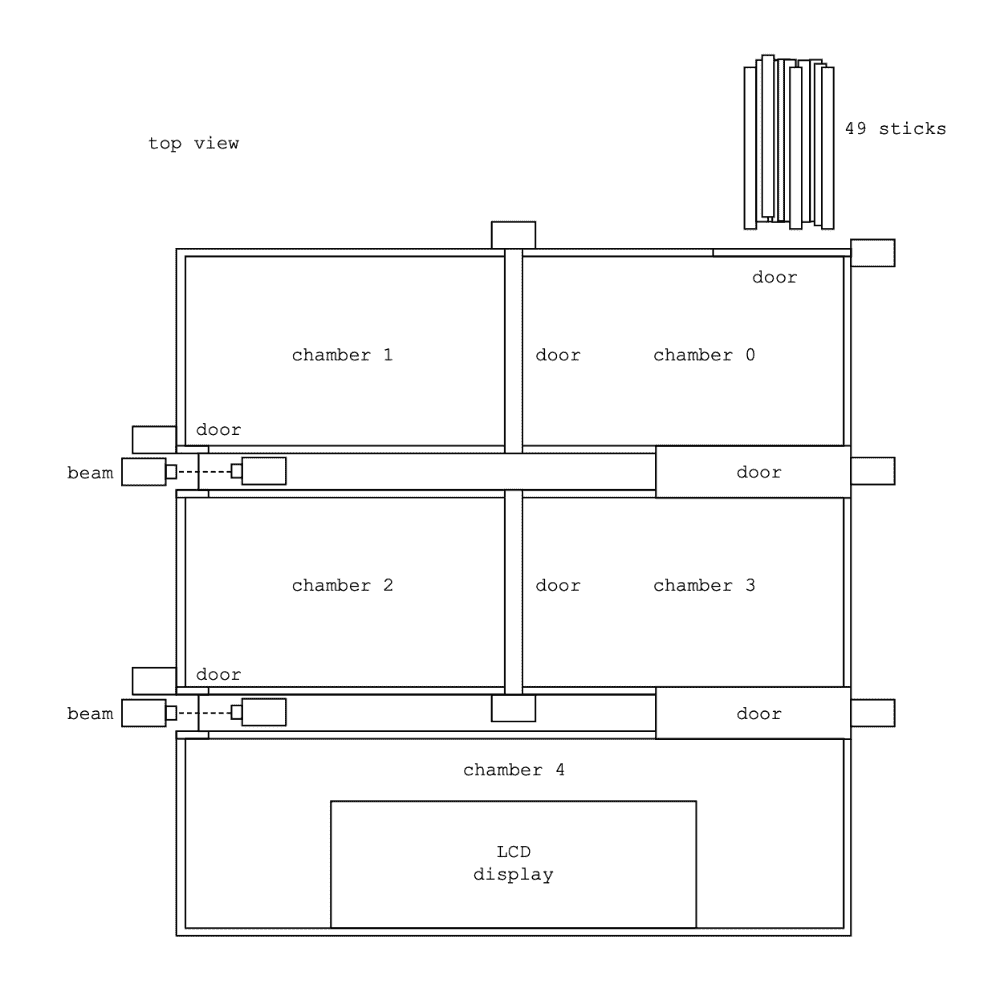
The divination algorithm described in I-Ching involves randomly dividing a bunch of sticks and doing modular arithmetic with the counts. The resultant number is then interpreted according to the book for “fortune telling”. A rough explanation of the algorithm on Wikipedia.
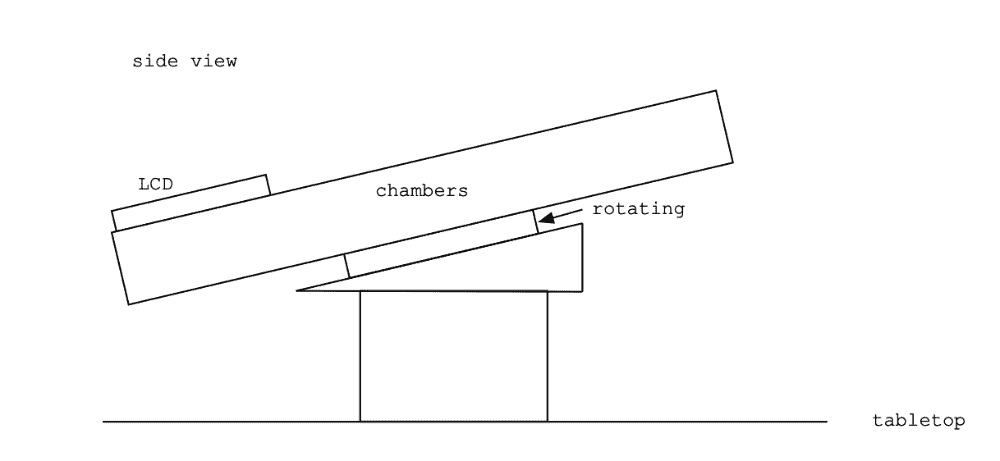
This design puts a flat box, divided into chambers, on a slanted and rotating stand. Using gravity, the sticks can fall into different chambers (connected by trapdoors), performing the required steps for the divination technique. Laser beams are used to count the sticks when they're going through certain doors.
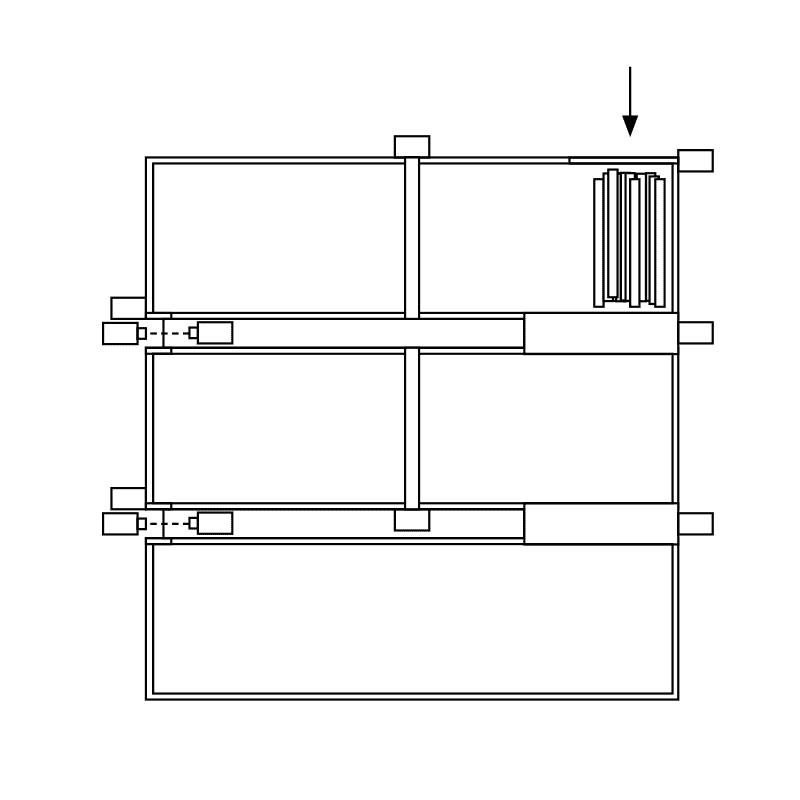
▲ I. Initially, the sticks are placed in chamber 0.

▲ II. Opening and closing this door, a random number of sticks are allowed to slide to chamber 1.

▲ III. The sticks falls to chamber 2, while being counted.
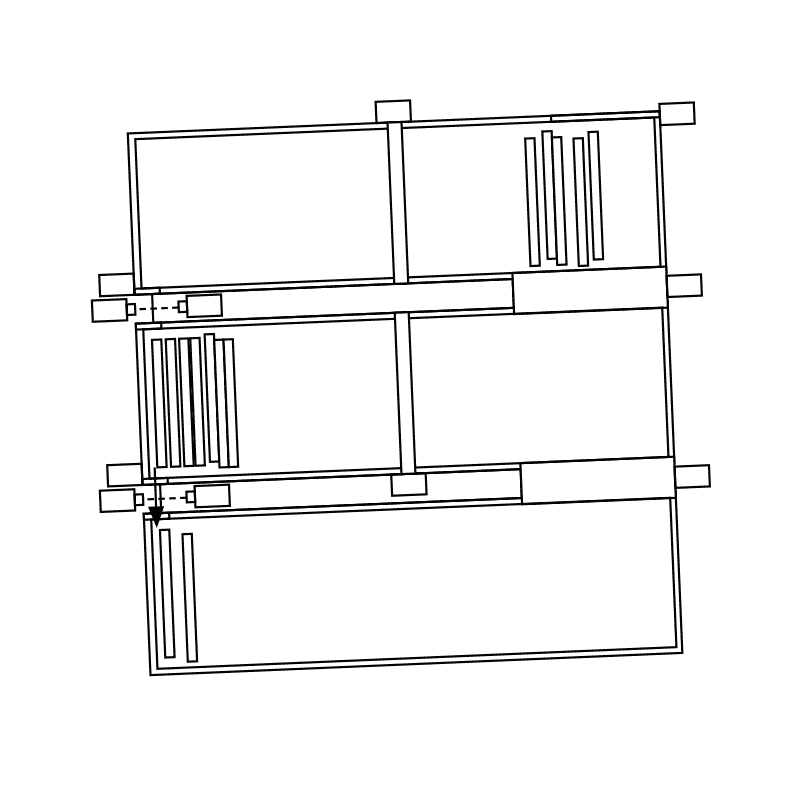
▲ IV. (count+3%4)+1 number of sticks are allowed to slide to chamber 4, enforced by the second beam counter.
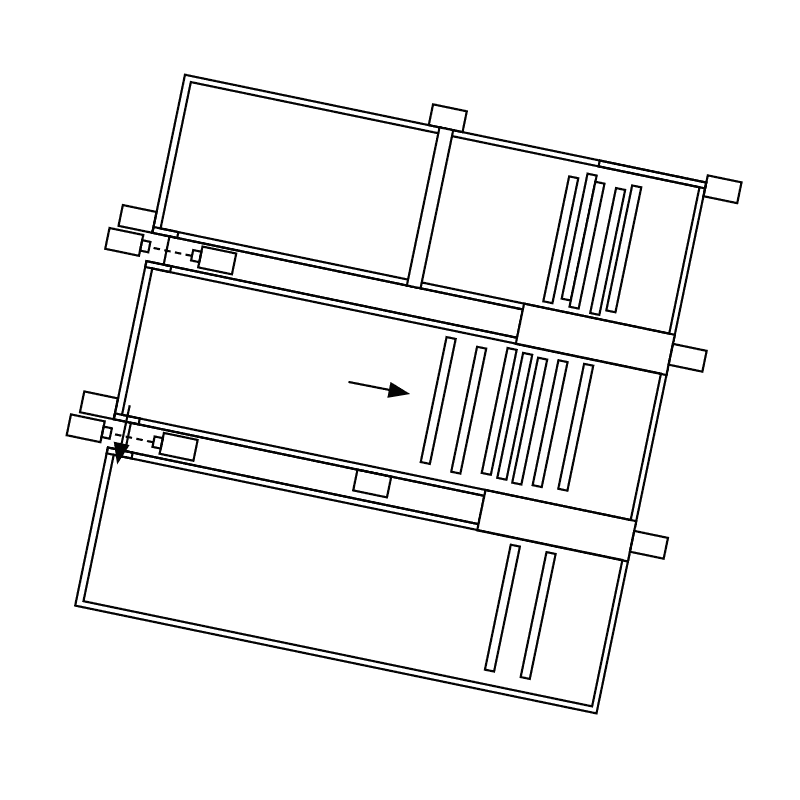
▲ V. The remaining sticks in chamber 2 slide to chamber 3

▲ VI. The sticks remaining in chamber 0 are slid to chamber 1

▲ VII. This group of sticks follow the same steps: the remainder to the modulo falls to chamber 4, while the rest joins the previous group in chamber 3.
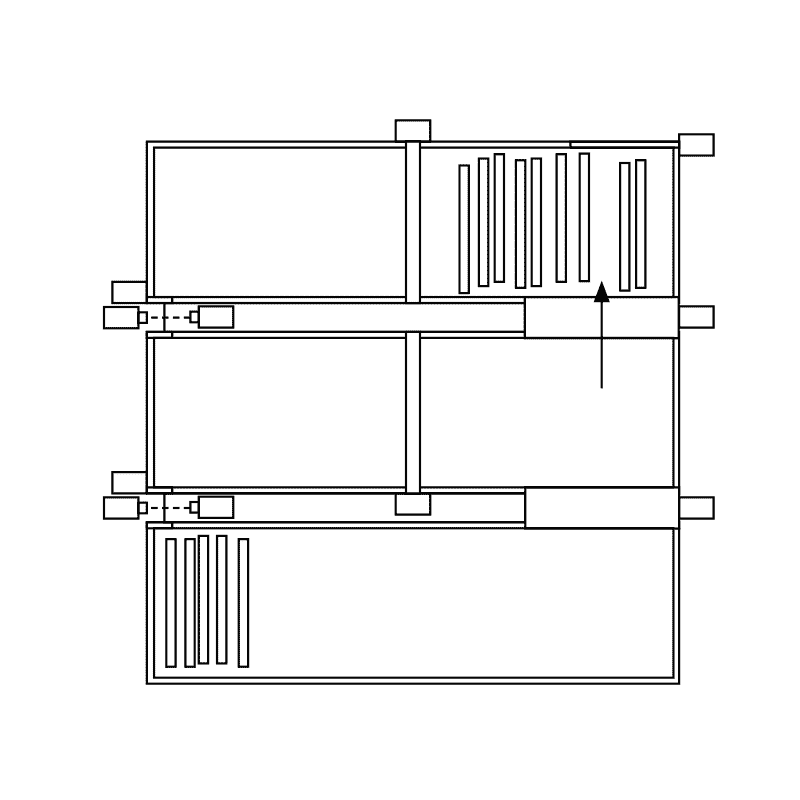
▲ VIII. The sticks in chamber 3 fall back to chamber 0. The process restarts. This loop continues until there are 6 or 7 or 8 or 9 sticks remaining in chamber 0. This number is one of the 6 numbers required for the final interpretation. The intermediate and final results are displayed on the LCD screen. At the very end, the “fortune-telling” message is also displayed.
Before settling on this idea, I initially had a couple other funny ones:
- a slot machine with a camera: if the machine “sees” that you're losing interest, it deliberately lets you win a bit, to keep you hooked (so that you can lose more in the end).
- a self-writing book: a book, a pen-plotter, and a page-turning machine combined. it just keeps on writing itself and flipping the pages.
- a poop machine. the user inserts in random things, the machine squeezes, moisturizes, and do other nasty things, and what appears to be poop come out at the other end.
It was somewhat challenging for me to come up with good ideas because:
- I'm not familiar with designing machineries, so I don't know what would be possible and what would be too janky to work or simply impossible.
- It seems that most of the “obvious” ideas has already been done, often many times.
Since currently I really don't know how I would approach realizing my idea, I haven't created detailed CAD models for its parts. However, as I progress through the course, I'll (hopefully) learn the necessary skills and have more detailed plans.